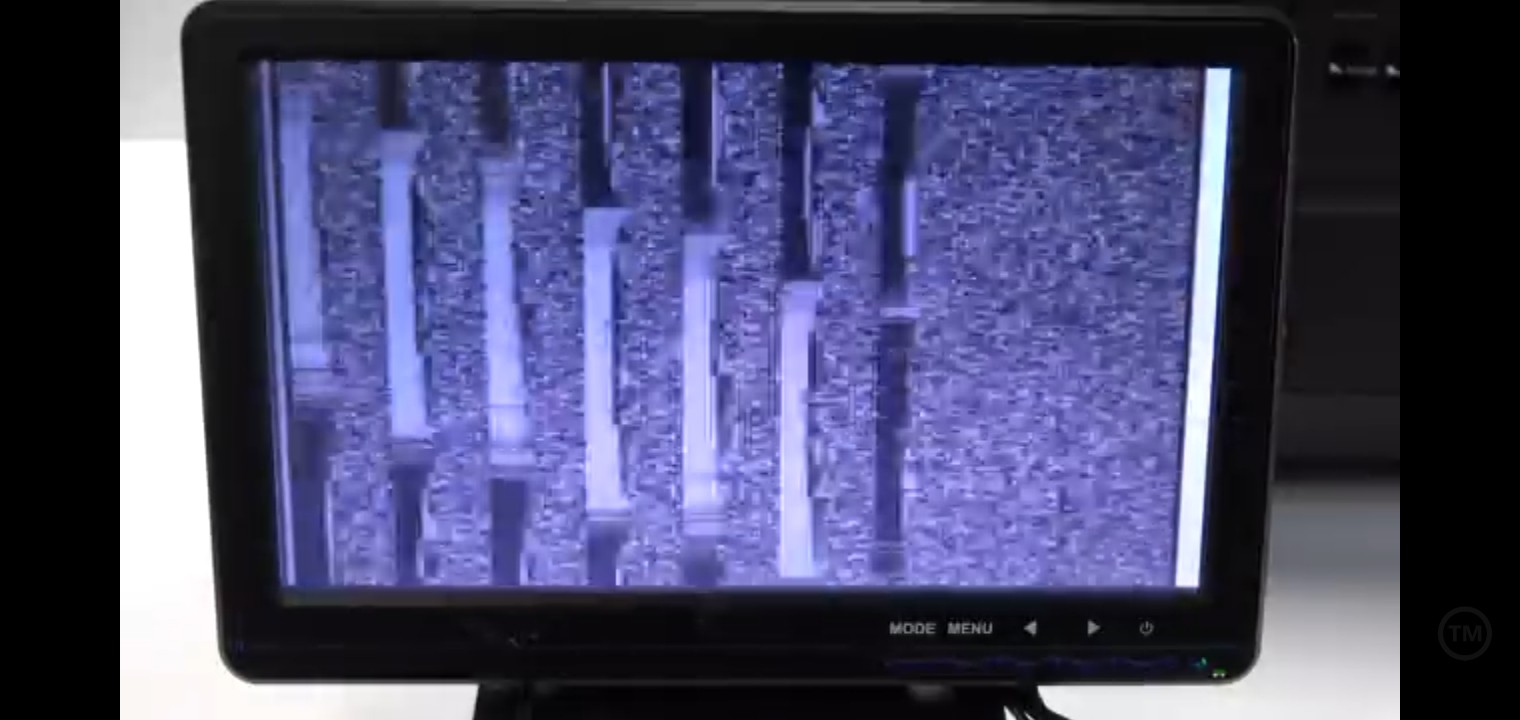Around 22min in he shows the digital data on a TV... and...

Frankly, I'd suggest each scanline appears to be made up of 7 PWM-nibbles. Could it be?
I can't recall exact specs, but composite is often captured at 640x480, and as i recall it's actually more like 512 high, so lets go with 480. This thing records at 14bit, 44.1Ksps. TV's 30fps(?). Stereo.
So, 44100*2*14=1,234,800bits/sec
/30/480=85.75bits/scanline
Hmmm, doesn't seem right...
/7=12.25 bits/bar yeah, no... 4870 positions/pwm. Nope.
But, there's black and white, so that'd remove A bit!... still 2400 positions/pwm, nah.
Though, another thing maybe considerable is that even though the pixel resolution may be lower than 640/row, the actual signal is much higher in resolution for storing color info. Still, 640*3=1920... still not enough resolution for even one pwm-11bitter.
So, say it used my pwm nibbles, 86bits/scanline / 4bits/pwm-nibble = 21.4 pwm nibbles per scanline, say each was buffered by start/stop of equal length: 16 values*3=48 is how many "pixels" each pwm-nibble would take... *21.4 nibbles =1027pixels per line. Which might just be doable... shrink the start/stop, consider the rgb*width... doable.
So, I guess this thing doesn't do that. The data must be in the "snow". I dunno what those vertical bars are, then. But they do seem to get wider at higher volume. And, interestingly, the actual audio can be heard noisily through a regular VCR, which is kinda what I'd've expected if something like pwm-nibbles were used (pwm is how audio is stored on Video Discs). But, who knows how they encoded the signal.
A somewhat fruitless venture down this rabbit hole with me, eh?
 Eric Hertz
Eric Hertz
Discussions
Become a Hackaday.io Member
Create an account to leave a comment. Already have an account? Log In.